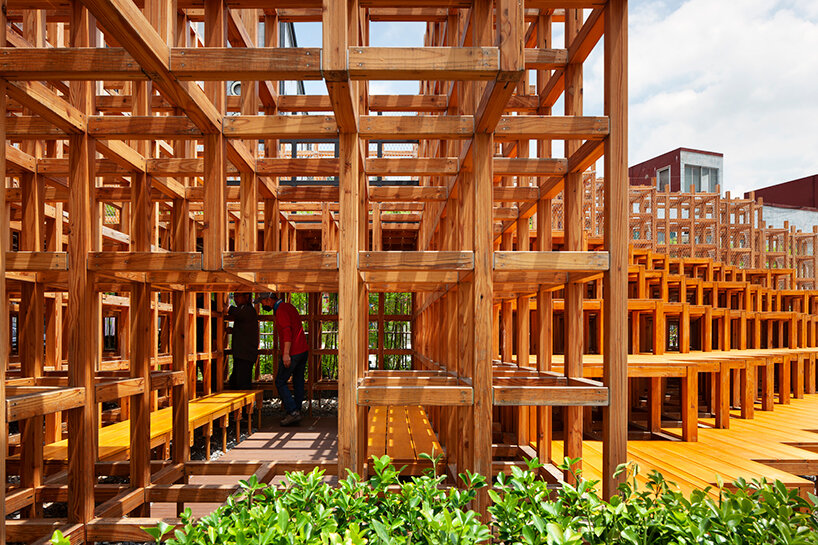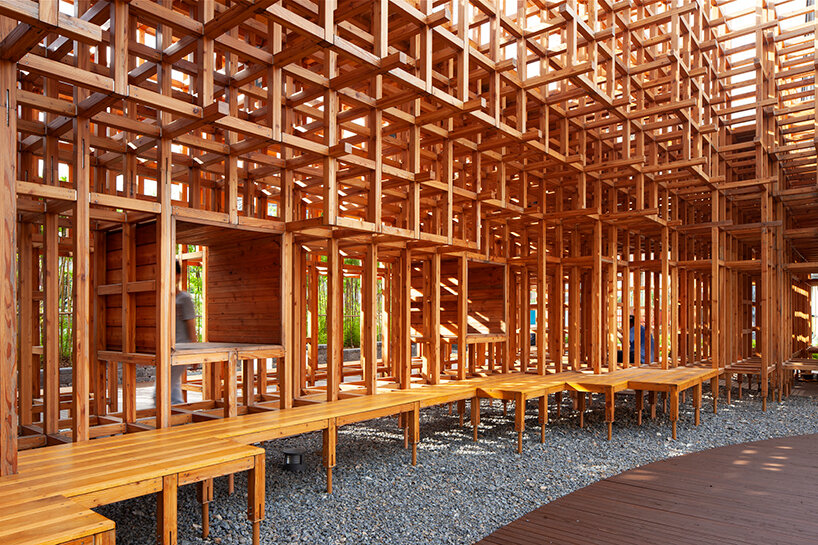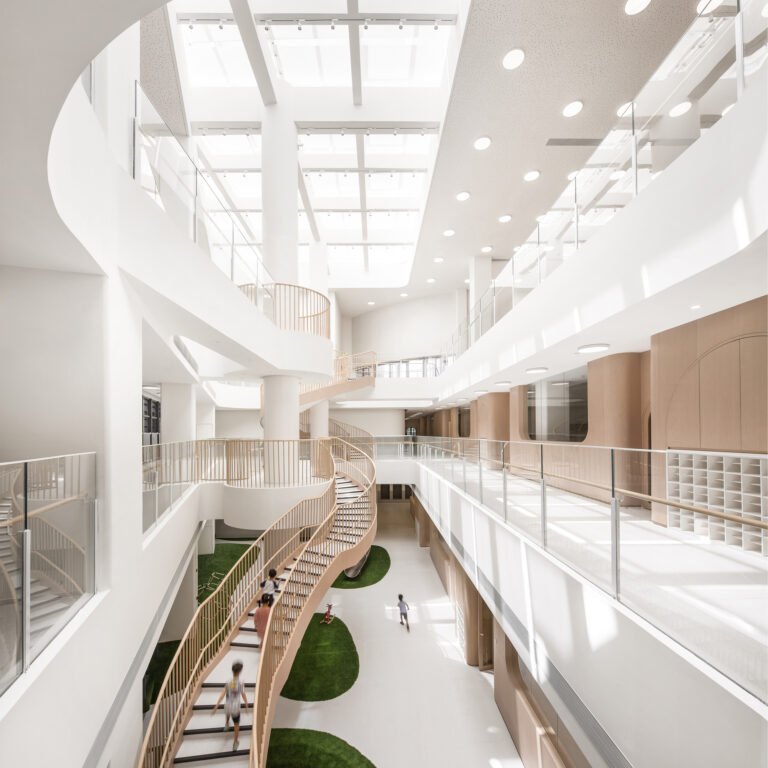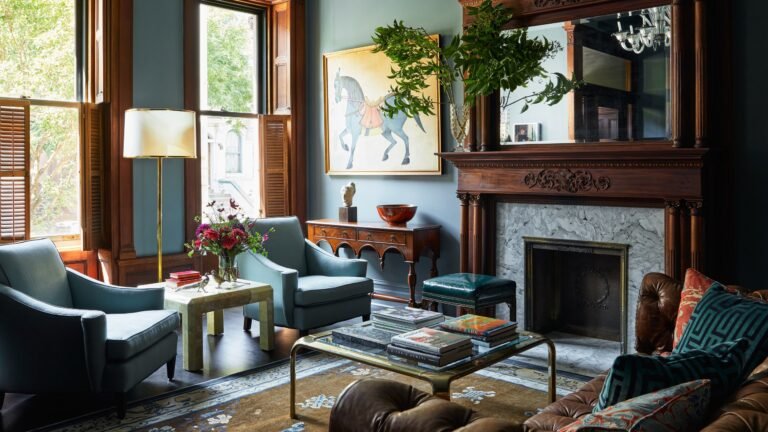the modular ‘forest pavilion’ by IDS is a blurred timber cloud in south korea
reviving the lost hadong plaza
Seoul-based architecture practice IDS takes to the southern region of Hadong-Gun to create its timber Forest Pavilion. The project is sited in Hadong Plaza which, in the seventies, was a vibrant urban space full of life. The team notes that the area had since lost its liveliness as it had been replaced with a parking lot. While a ‘1970s Cultural Center’ had been built nearby to memorialize the days long gone, it was not enough to revive the spirit of the place.
The architects at IDS realize the Forest Pavilion to revive the lost plaza. The team determines that a successful public plaza, especially in a small town, is ‘a place for gathering, resting, and playing so that various activities and events could occur by local people and tourists.’
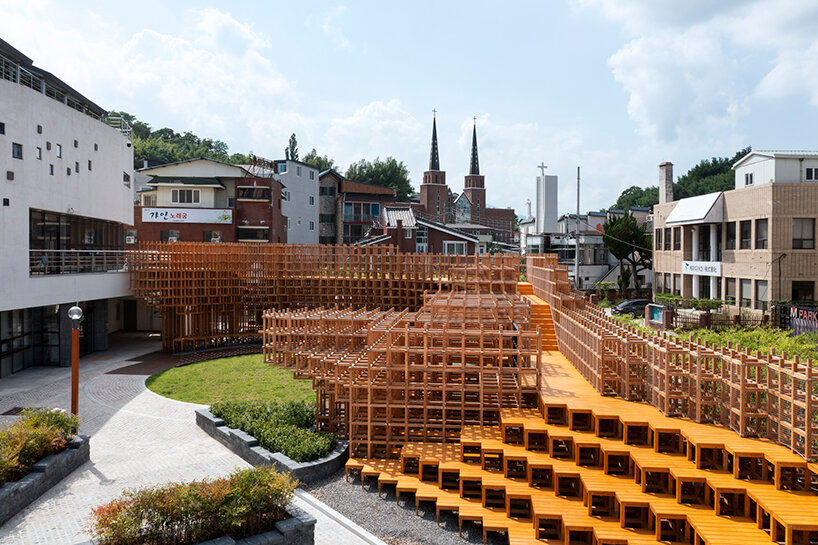 images © Youngchae Park
images © Youngchae Park
explore the ethereal timber pavilion
The Forest Pavilion by IDS (see more here) takes shape as an ethereal cloud of timber. This blurred framework integrates occupiable spaces which can be programmed for public use, spanning two levels. At the ground level, openings of varying sizes lead to an interconnected network of interior spaces in which visitors might walk or rest, or where children might play hide and seek. Meanwhile, the upper level creates a connection to the second floor terrace of the 1970s Cultural Center, physically linking this existing building with the newly enlivened plaza.

The modular system by ids
IDS employed a modular system in the construction of its Forest Pavilion to ensure simplicity while suggesting complexity. The team explains the process: ‘The module itself is simple but we tried two times of mockup tests and secured structural stability before the installation. A unique method of the joint is made for this pavilion. Two modules were assembled at once to prevent a structural issue even timber undergoes expansion and contraction.
‘steel connectors and half-lap are used to join three beams and a column, and the steel connector was invented for this project. Since timber may undergo expansion, contraction, and discoloration when it is outside, we used a wood stain that is strong against outdoor air and sun and suggested painting it regularly to prevent the transformation.‘
